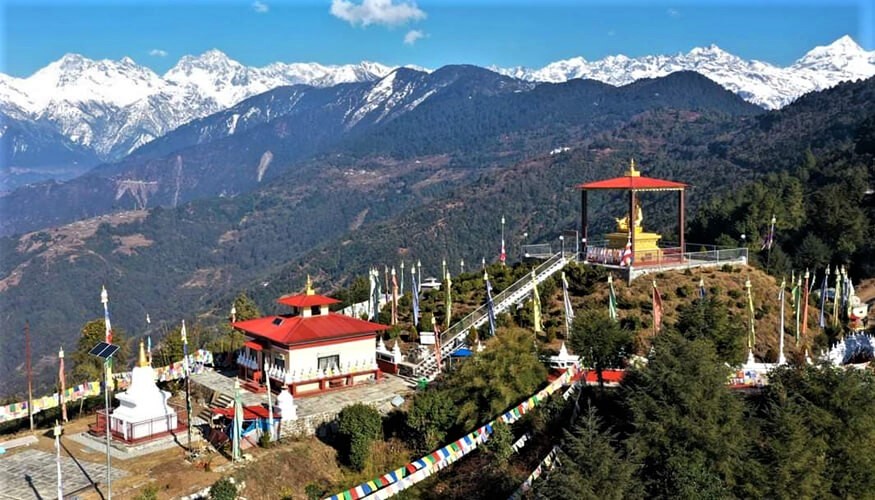Everything you need to know about Helambu | Interesting things about Helambu Region
Helambu is a scenic and culturally rich region located in the north-central part of Nepal. It is known for its beautiful landscapes, charming villages, and unique cultural heritage. Here's everything you need to know about Helambu:
1. Location:
Helambu is located in the north-central part of Nepal, primarily in the Sindhupalchok and Nuwakot districts. It lies northeast of Kathmandu, at a distance of about 72 kilometers from the capital city. The region is part of the Langtang National Park and shares its borders with Tibet.
2. Trekking Routes:
The Helambu region offers a variety of trekking routes suitable for different preferences and time constraints. The most popular trek is the Helambu Trek, which typically starts from Sundarijal, a small town located on the outskirts of Kathmandu. From Sundarijal, trekkers make their way through forests, terraced fields, and picturesque villages, such as Chisapani, Kutumsang, Melamchi Gaun, Tarke Gyang, and Sermathang. The trek usually takes around 5-8 days, depending on the chosen itinerary.
3. Scenic Beauty:
Helambu is renowned for its stunning natural landscapes. As trekkers ascend through the region, they are treated to breathtaking views of snow-capped peaks, including Langtang Lirung (7,227 meters), Dorje Lakpa (6,966 meters), and Gaurishankar (7,134 meters). The trails meander through lush green valleys, dense forests of rhododendron and oak trees, and charming alpine meadows adorned with wildflowers during the spring season.
4. Cultural Heritage:
The region is inhabited by indigenous communities, primarily Tamang and Sherpa. These communities have preserved their unique cultural traditions, which are on display throughout the trek. Visitors have the opportunity to witness traditional dances, music performances, and religious rituals, providing insights into the local way of life. Festivals, such as Losar (Tibetan New Year) and Dashain (a major Hindu festival), are celebrated with great enthusiasm and offer a vibrant cultural experience.
5. Villages and Lifestyle:
The trekking route in Helambu takes you through several quaint and picturesque villages. Each village has its own distinct charm and offers a glimpse into the traditional rural lifestyle of the locals. Villages like Melamchi Gaun, Tarke Gyang, and Sermathang are known for their warm hospitality, and visitors can immerse themselves in the local culture, taste traditional cuisine, and witness the daily activities of the villagers, which often include farming and animal husbandry.
6. Monasteries and Temples:
Helambu is dotted with Buddhist monasteries and Hindu temples, serving as religious and cultural landmarks. The Tarke Gyang Monastery, located in the village of the same name, is a significant Buddhist monastery in the region. It is a place of spiritual importance for both locals and visiting pilgrims. Additionally, the region is home to ancient Hindu temples, such as the Melamchi Temple and the Ama Yangri Temple, which hold religious significance and attract devotees.
7. Helambu Hyolmo Culture:
The indigenous Hyolmo people are an ethnic group inhabiting the Helambu region. They have their own language, known as Hyolmo, and possess a distinct culture and traditions. The Hyolmo people are known for their craftsmanship in pottery, woodcarving, and weaving. Exploring their cultural practices and interacting with the locals provides a fascinating opportunity to learn about their way of life and artistic skills.
8. Accommodation and Facilities:
Along the trekking routes in Helambu, there are teahouses and lodges that cater to trekkers. These establishments provide basic accommodation and meals, allowing trekkers to rest and rejuvenate. However, it's important to note that the facilities may vary in terms of comfort and amenities, as the region is relatively remote.
9. Flora and Fauna:
Helambu boasts rich biodiversity, thanks to its diverse landscapes. Lower elevations are adorned with dense forests of rhododendron, oak, and pine trees, while higher regions feature alpine meadows. The Langtang National Park, which encompasses parts of Helambu, is home to various wildlife species. Trekkers may have the opportunity to spot wildlife such as the elusive red panda, Himalayan black bear, musk deer, and a variety of bird species.
10. Earthquake Impact:
Similar to many regions in Nepal, Helambu was affected by the devastating earthquake in 2015. Some villages and trails in the area suffered damage. However, reconstruction efforts have been made, and trekking activities have resumed, allowing visitors to explore and experience the beauty of Helambu once again.




.jpg)



